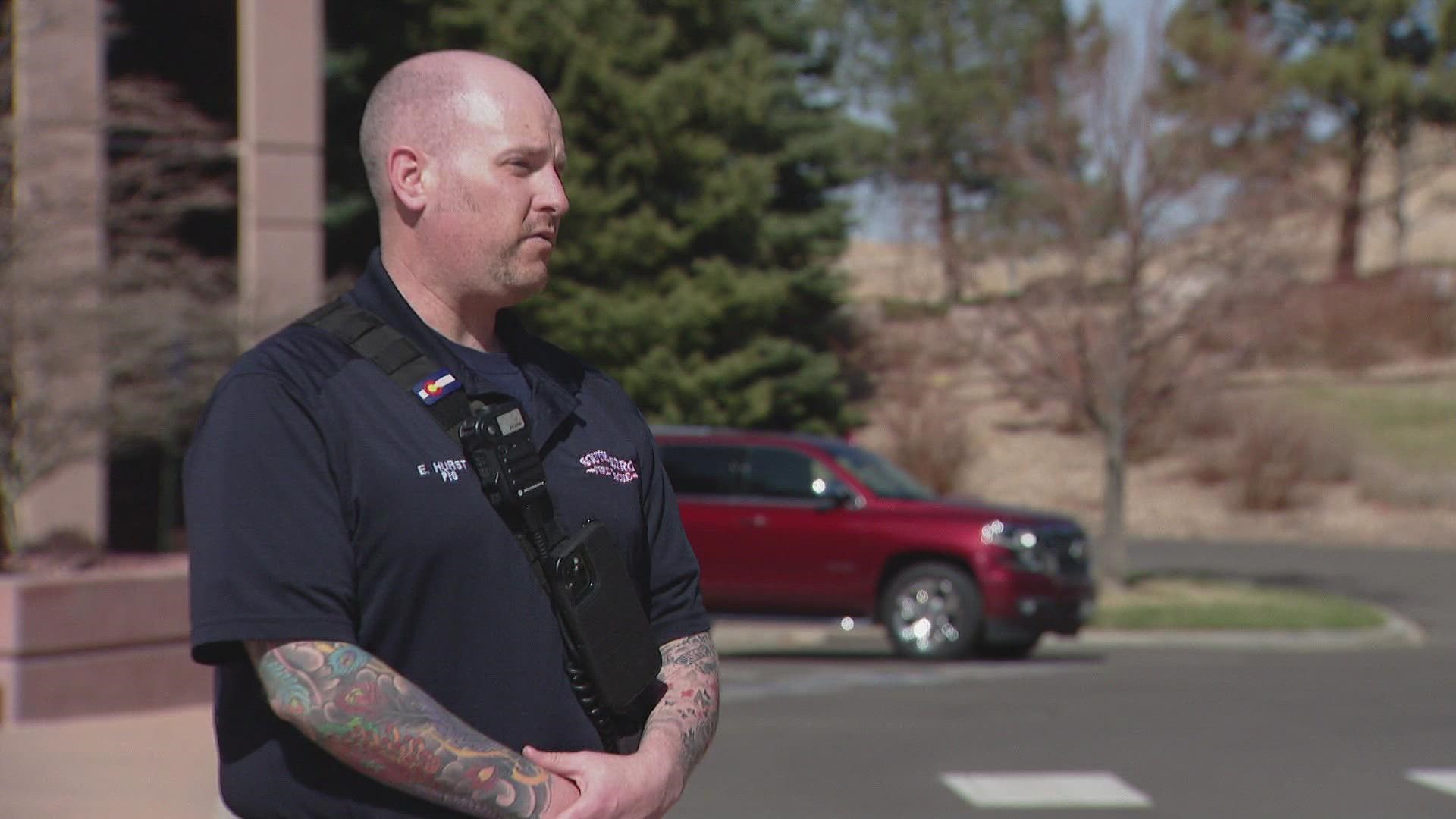COLORADO, USA — Colorado’s streak of two straight weeks with Red Flag Warnings across parts of the state is forcing fire departments to respond to calls in different ways. The dry and windy weather leaves little time before a small spark turns into an uncontrolled wildfire.
When the wind picks up, the response from fire departments changes.
"Wind dramatically changes everything, as do the dry conditions," said Eric Hurst with South Metro Fire Rescue. "Fire can get out of hand very quickly on a Red Flag day."
Hurst said his department usually sends two engines and a chief to calls of a vegetation fire on a normal day. On days when Red Flag Warnings are in effect, the number triples, with more than 30 firefighters responding to those calls.
"We want to keep fires as small as we can, and that means get there as soon as we can with as many people as we can to help keep those small," Hurst said. "When fires move fast, it means they’re going to be big, and chances are in this fire district if they’re big it’s going to be threatening somebody’s house or neighborhood."
Colorado has now seen 14 straight days of Red Flag Warnings across the state. At the Boulder Fire Department, staffing increases on days when these warnings are issued.
"We have an extra type 3 engine that's staffed today and a type 6 engine," Brian Oliver with the Boulder Fire Department told 9NEWS as they fought a fire in Boulder in early April. "So wildland engines are staffed extra on top of the usual structure engines. That's a big piece, having that extra apparatus here to fight new starts."
Not all fire departments respond to Red Flag days the same way. In smaller, more rural areas like Grand Lake, the fire department will call in extra help through mutual aid more quickly on Red Flag days. They simply don’t have the resources to respond the same way as a lot of fire departments in the metro area do.
In all areas, the goal is to respond with force to a fire as soon as it starts.
In South Metro’s district, wildland fire trucks follow normal fire engines around to calls in case a fire spreads to an area that normal fire trucks can’t reach.
"We do what we call brush truck follows," Hurst said. "You may see the typical fire engine that you would see out and about every day, and then a smaller 4x4 fire engine following it everywhere it goes."
SUGGESTED VIDEOS: Wildfires in Colorado

